Why Employee Ownership is the Key to Sustainable Agency Growth and Talent Retention

Agency owners are struggling to find long-term solutions for succession planning, talent retention, and business perpetuation. Many have considered private equity sales, others offer limited equity to top producers—but a growing number are discovering a more powerful alternative: the Employee Stock Ownership Plan (ESOP).
ESOPs are not just about offering shares; they’re about reshaping culture, unlocking financial literacy, and enabling teams to think like owners. If you’re a middle market insurance agency owner searching for ways to build a resilient business while retaining top talent, employee ownership might be your most strategic move yet.
The ESOP Advantage in Today’s Insurance Landscape
An Employee Stock Ownership Plan (ESOP) is a retirement plan that allows employees to gain ownership interest in the company. It’s not an unfamiliar term in industries like manufacturing or grocery chains (think WinCo or Publix), but within the insurance industry, it’s still significantly underutilized.
Unlike traditional sales to private equity firms—which often prioritize short-term growth over people—ESOPs maintain the independence and culture of the agency. More importantly, they create wealth opportunities for every employee, from producers to account managers. This democratization of ownership strengthens agency stability and makes long-term scaling far more realistic.
Agencies that implement ESOPs report improvements in retention, productivity, and employee satisfaction—making them a cornerstone of sustainable agency growth.
Ownership Mindset: Building a Culture of Accountability and Loyalty
There’s a profound psychological shift when someone becomes an owner. With a stake in the game, employees tend to make decisions not just for their departments, but for the benefit of the entire organization.
As podcast guest Brian Baughman put it, “Most people don’t care how an ESOP works until they see the benefits.” Once team members start seeing their annual ESOP statements rise, they begin asking smarter questions, proposing cost-saving ideas, and owning outcomes beyond their job descriptions.
At The Hartwell Corporation, where Brian serves as VP of Sales, even junior team members have brought forward innovative ideas that saved tens of thousands of dollars. Why? Because when the company succeeds, their personal wealth grows. That’s ownership culture in action.
Solving the Talent War with Equity, Not Just Salary

Recruiting and retaining top insurance talent is one of the greatest challenges facing agencies today. Larger firms in metropolitan areas are poaching account managers and producers from smaller, local agencies by offering inflated salaries and remote flexibility. This “talent war” has left many agency owners scrambling for countermeasures.
An ESOP provides a powerful wedge. When employees understand that staying put means building long-term wealth—often amounting to six or seven figures by retirement—it’s harder to lure them away with a higher paycheck. “People don’t leave ESOPs. They recruit their friends into them,” said Baughman.
Instead of being reactive, ESOP agencies become destinations—attracting experienced professionals who want to build a future, not just earn a paycheck.
Financial Literacy and the Income vs. Balance Sheet Wealth Gap
One of the most overlooked challenges in implementing an ESOP is teaching employees the difference between income statement wealth and balance sheet wealth. Many people equate a higher salary with being “wealthy,” but true financial security comes from building assets—something an ESOP helps facilitate.
Unfortunately, financial literacy is often lacking among new entrants to the workforce—and even seasoned professionals. This makes ongoing internal education a non-negotiable. As David Carothers noted in the podcast, “You can’t expect people to act like owners if they don’t understand the value of what they own.”
ESOP communication has to go beyond the annual share statement. Agencies should use newsletters, internal webinars, and workshops to help employees connect their daily performance to long-term financial growth.
Creating Generational Wealth and Agency Stability
One of the most powerful aspects of an ESOP is its potential to create generational wealth. Baughman shares a compelling story of a grocery store cashier with over $1 million in stock—simply for staying with the company and contributing to its long-term success. The same potential exists within insurance.
Agency principals often wrestle with how to “do right” by their people when the time comes to exit. ESOPs offer a path to do that—not only by providing employees a stake in the sale proceeds, but also by maintaining cultural continuity. It’s a win-win scenario that aligns leadership legacy with team benefit.

Whereas traditional sales can leave employees blindsided, overworked, or unemployed, an ESOP ensures the people who helped build the agency also share in its success.
Overcoming the Barriers: Compliance, Cost, and Control Concerns
Let’s not sugarcoat it—starting an ESOP isn’t easy. It involves legal compliance, accounting adjustments, and upfront costs that can range from $50K to over $100K, depending on the size and structure of the agency.
However, many of the fears around “losing control” are unfounded. As Baughman clarified, “An ESOP isn’t a democratic free-for-all where everyone votes on decisions.” The owner (or president) still leads. A board and trustees are formed to oversee the process, but day-to-day management typically remains unchanged.
Moreover, tax benefits are considerable. ESOP-owned companies do not pay federal income tax on the portion of the business that’s employee-owned. That capital can be reinvested into agency operations, staff development, or acquisitions—fueling faster growth with fewer liabilities.
ESOPs as a Strategic Differentiator in the Middle Market
In a saturated insurance market, producers often struggle to find a unique value proposition when pitching new business. ESOPs offer a powerful narrative.
Imagine this: you’re presenting to a CFO who’s tired of hearing the same old line about saving 10% on premiums. But instead, you tell them that your agency is employee-owned—meaning every person servicing their account has a vested interest in doing a great job. That’s a differentiator. That’s how you gain trust.
Additionally, ESOPs resonate with community-focused clients and organizations that value long-term partnerships. They show that your agency is rooted, stable, and built for the long haul.
Conclusion: Plan Early, Educate Often, and Own the Future
Whether you’re five years or five months from retirement, it’s never too early to start thinking about your agency’s future. ESOPs require careful planning, yes—but they offer one of the most effective ways to ensure continuity, reward loyal employees, and preserve your company’s identity.
Agency owners often ask, “What will happen when I’m gone?” With an ESOP, the answer can be: everything you hoped for. Because employee ownership is more than a tax structure or retirement plan—it’s a cultural investment in your team, your values, and your legacy.
If you’re ready to start a conversation about building a more resilient, employee-owned future, talk to others who’ve been there. As Baughman said, “You don’t have to figure it all out at once—but don’t wait until it’s too late to begin.”
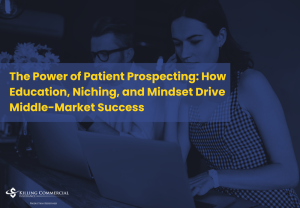
The Power of Patient Prospecting: How Education, Niching, and Mindset Drive Middle-Market Success
Few industries reward consistency, discipline, and patience quite like middle-market commercial insurance. Initially, every producer starts with a different story, background, and path into the business. However, the ones who rise are the ones who learn to embrace the long game. Moreover, while success may take time, those who persevere ultimately reap the benefits. Furthermore, this industry values resilience, and those who remain committed often find themselves achieving great success in the end.
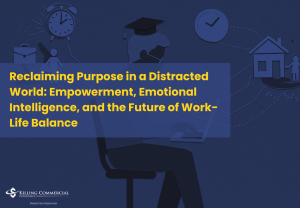
Reclaiming Purpose in a Distracted World: Empowerment, Emotional Intelligence, and the Future of Work-Life Balance
In today’s performance-obsessed culture, achieving elite status in your profession can often come with a hidden price. Tania Khazaal, known to many as Tanya the Herbalist, knows this truth firsthand. After climbing the ranks in the insurance industry and landing in the top 1% of sales professionals, she found herself at a crossroads. Despite the accolades, international travel perks, and consistent recognition, she was suffering from a quiet crisis: burnout.
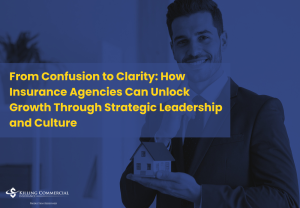
From Confusion to Clarity: How Insurance Agencies Can Unlock Growth Through Strategic Leadership and Culture
In the fast-paced world of commercial insurance, the grind of daily operations often blinds agency leaders to the foundational cracks forming beneath them. Producers are focused on closing deals. Account managers are buried in servicing. Agency principals are juggling leadership, sales, operations, and finance. Yet in the midst of this hustle, many agencies lack the one thing that can unlock the next level of growth: organizational clarity.
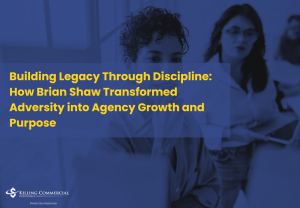
Building Legacy Through Discipline: How Brian Shaw Transformed Adversity into Agency Growth and Purpose
Brian’s journey isn’t one of shortcuts or overnight success. It’s the story of a man who has faced battlefields, boardrooms, and hospital beds — and come out the other side with an unshakable sense of purpose. His agency is young, his vision is clear, and his “why” runs deep.
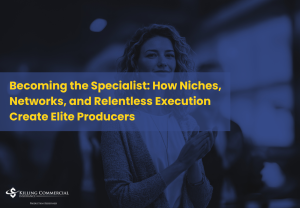
Becoming the Specialist: How Niches, Networks, and Relentless Execution Create Elite Producers
Every producer wants to win. But only a small percentage ever reach the level where winning becomes inevitable—not because they get lucky, not because the market is soft, but because they commit themselves to mastery. They study harder, niche deeper, build better networks, and execute with more consistency than everyone else around them.

Becoming the AI-First Agency: How Insurance Producers Can Leverage Automation to Outpace the Competition
Artificial Intelligence is no longer a buzzword for tomorrow. It’s today’s most powerful tool for increasing efficiency, lowering costs, and growing your book of business faster than ever before. For insurance producers and agency owners, this isn’t a matter of curiosity or a “nice to have” anymore. It’s a necessity. The reality is that your competition may already be using AI-powered tools to identify prospects, streamline service, and close deals before you even realize you’re in the game.

Responses